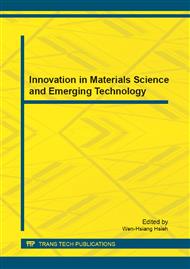p.129
p.134
p.138
p.143
p.149
p.154
p.159
p.164
p.169
Communication Security Using a Combination of Steganographic System and Empirical Mode Decomposition
Abstract:
nformation security has become a major issue in recent years, as new ways of information exchange arise due to the rapid development of computing, communication and internet technologies. We propose the image communication systems to secure the information by using a steganographic system and empirical mode decomposition method. The concealed message between the sender and receiver is important in the steganographic system. The encrypted message is further decomposed by using the empirical mode decomposition. The information is transmitted via the public channel and secure channel. At the receiver side the weak message can be retrieved back effectively. The retrieved message carries the same characteristics as the original message. Simulation results have confirmed that this combination model is highly robust against various signal processing operations and geometric attacks. The system increases the security of information data given a variety of constraints and conditions. Our methods have been proven effective for application in various fields which require secure communication, such as mobile telephone, internet and others. By means of this method, researchers can better understand the characteristics of the secure communication.
Info:
Periodical:
Pages:
149-153
Citation:
Online since:
December 2011
Price:
Сopyright:
© 2012 Trans Tech Publications Ltd. All Rights Reserved
Share:
Citation:


